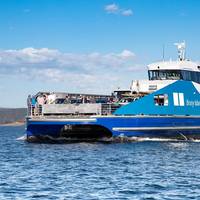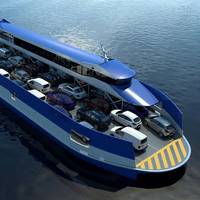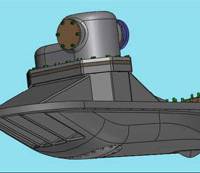Made-to-Measure Ro-Pax Ferry for Bruny Island

A double-ended ro-pax ferry Nairana has been launched for service to Bruny Island in Tasmania. The Incat Crowther 44 design vessel was commissioned by Sealink Travel Group and built by Richardson Devine Marine in Hobart.According to Incat Crowther, Nairana will bring improvements in both transit and turn-around times. The vessel combines a robust aluminum structure, double-ended functionality and a catamaran platform with a generous beam offering fuel savings compared to a monohull.The ferry is configured to carry 36 cars and 192 passengers.
Scania to Power Double Ended RoPax Ferry

Incat Crowther announced the design of a double-ended Ro-Pax Ferry to operate to Bruny Island in Tasmania.The vessel will be operated by Sealink Travel Group – one of Australia’s largest vessel operators – and will be built by Richardson Devine Marine in Hobart. The first vessel will go into service in December 2019.The vessel is unusual for a double ended vehicle ferry in that it is a robust aluminium catamaran. In addition, the vessel is designed for the later fitting of an extra vehicle deck should the vehicle patronage increase…
Advanced Marine Propulsion with a New Twist

OCOR Corporation in San Diego, California has recently patented a submerged waterjet marine propulsion system that utilizes a helical lobe pump to displace water through a jet system. The ‘new twist’ refers to the helical geometry of the pump lobes on each of the counter-rotating rotors. Called OCOR Marine Propulsion (OMP), the new system has the potential to dramatically reduce the fuel consumption of virtually any size vessel and do so without cavitation. The net result is a…
Avoid Poorly Implemented Training Programs

All vessel owners and operators will agree that employee training and education is of prime importance when it comes to running a safe operation. A considerable amount of time, effort, expense and other resources are usually allotted to such programs. Although some programs are implemented with very little fanfare, other programs are often rolled out with a great amount of attention and the highest of expectations. Unfortunately, many of these programs, after the initial enthusiasm has worn off, are often shifted to the back burner and rarely used.







